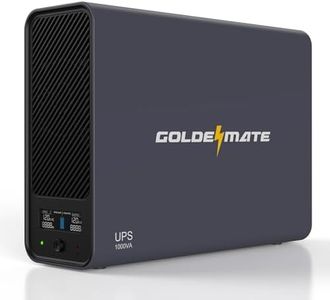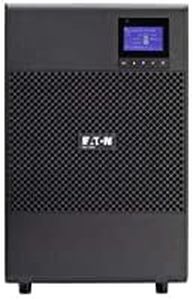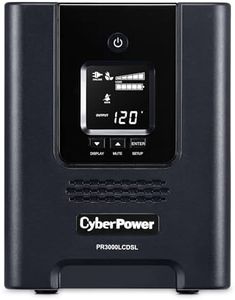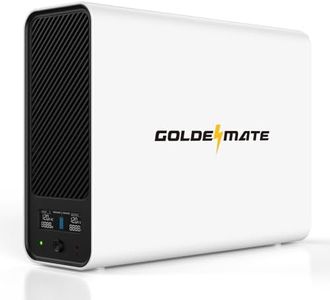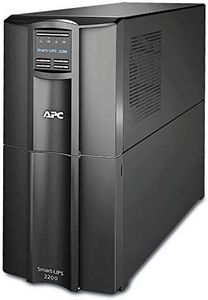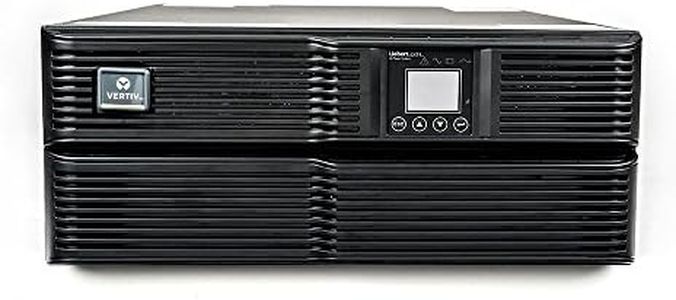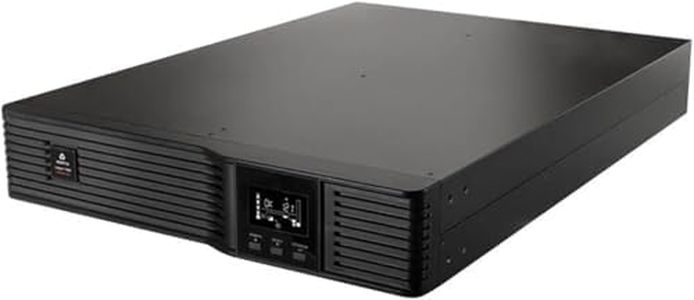10 Best Sine Wave Ups 2026 in the United States
Our technology thoroughly searches through the online shopping world, reviewing hundreds of sites. We then process and analyze this information, updating in real-time to bring you the latest top-rated products. This way, you always get the best and most current options available.

Our Top Picks
Winner
APC Smart-UPS 3000 VA Lithium Ion UPS, SMTL3000RMUCNC, Short Depth, Pure Sine Wave Rack Mount UPS with Network Card
Most important from
25 reviews
The APC Smart-UPS 3000VA Lithium Ion is a strong choice if you need reliable backup power for rack-mounted systems. It offers a solid power capacity of 3000VA (2700W), suitable for protecting important servers or network gear from outages. The pure sine wave output is a big plus, ensuring clean, stable power that’s safe for sensitive electronics. The unit’s transfer time is fast, helping prevent disruptions when switching to battery. It includes ten outlets—eight standard 5-15R and two 5-20—giving flexibility for connecting multiple devices.
The built-in network management card and SmartConnect feature allow easy remote monitoring and alerts, which is great if you want to track UPS status without being on-site. The lithium-ion battery helps keep the UPS lighter and may last longer compared to traditional batteries. Its slim 2U rackmount design fits well in most server racks, though at nearly 78 pounds it’s on the heavier side. The detailed battery runtime depends on the load you put on it, so connecting many devices will shorten backup time. Also, the SmartConnect service is free only for six months after purchase, so ongoing use will require a subscription.
This UPS suits small to medium IT setups that need dependable power protection with convenient management. However, if you require very long battery backup or a more lightweight option, considering other models might be beneficial.
Most important from
25 reviews
Vertiv Liebert PSI5 Lithium Ion UPS - 3000VA/2700W 120V Line Interactive AVR 2U Rack/Tower, 0.9 Power Factor, Sine Wave, 3 Programmable Outlets, Rotating LCD Display, 5 Year Warranty(PSI5-3000RT120LI)
Most important from
18 reviews
The Vertiv Liebert PSI5 Lithium Ion UPS offers a solid power capacity of 3000VA/2700W, suitable for protecting medium to large office or server setups where consistent power is crucial. It uses lithium-ion batteries, which last about twice as long as traditional ones, reducing the need for replacements and lowering long-term costs. This model provides a decent battery runtime of roughly 9 minutes at full load, enough to safely shut down devices during an outage or switch to a backup generator. Its sine-wave output is ideal for sensitive electronics, ensuring stable and clean power delivery. The UPS supports both rack and tower setups with a slim 2U form factor, making it flexible for different spaces, though it is fairly heavy at nearly 69 pounds.
It includes three programmable outlets, allowing customization of which devices receive battery backup or power conditioning. The transfer time—the brief pause before backup power kicks in—is line-interactive and typically fast enough for most equipment. The built-in rotating LCD display offers easy monitoring of UPS status and settings. While the size and weight might be bulky for small spaces and the number of outlets is limited compared to some competitors, the 5-year advanced replacement warranty including the battery provides significant peace of mind. For those needing reliable sine-wave power protection with low maintenance and good runtime for medium loads, this UPS is a strong choice.
Most important from
18 reviews
APC Smart-UPS 1500VA Lithium Ion UPS with SmartConnect, SMTL1500RM3UC, Pure Sine Wave, Short-Depth 120V Uninterruptible Power Supply
Most important from
25 reviews
The APC Smart-UPS 1500VA Lithium Ion offers reliable power backup with clean, pure sine wave output, protecting sensitive electronics and ensuring stable power. With a 1500VA (1350W) capacity, it supports moderate loads, making it suitable for small servers, workstations, or important home office equipment. The lithium-ion battery is advantageous due to its longer life and lighter weight compared to traditional batteries.
Its compact 3U rackmount design fits well in tight spaces or server racks, and the six standard outlets provide ample connections for multiple devices. The built-in LCD screen displays useful information such as load and battery status, allowing easy monitoring without additional tools. A key feature is the APC SmartConnect remote monitoring, which enables online UPS monitoring, updates, and support.
The unit weighs nearly 50 pounds, making it less convenient to move frequently. This UPS is well suited for users requiring reliable sine wave power in professional or home office environments, particularly where remote management is important.
Most important from
25 reviews
Buying Guide for the Best Sine Wave Ups
When choosing a sine-wave UPS (Uninterruptible Power Supply), it's important to understand the key specifications that will ensure you get the best fit for your needs. A sine-wave UPS provides a smooth and consistent power output, which is crucial for sensitive electronic equipment. By understanding the key specs, you can make an informed decision that will protect your devices and keep them running smoothly during power outages or fluctuations.FAQ
Most Popular Categories Right Now
